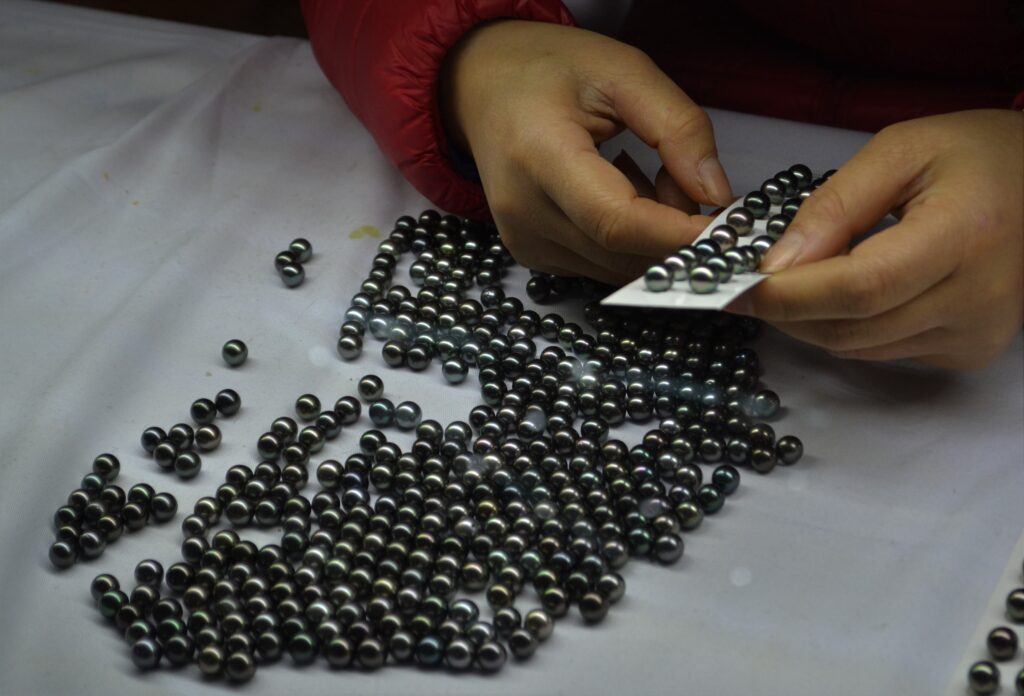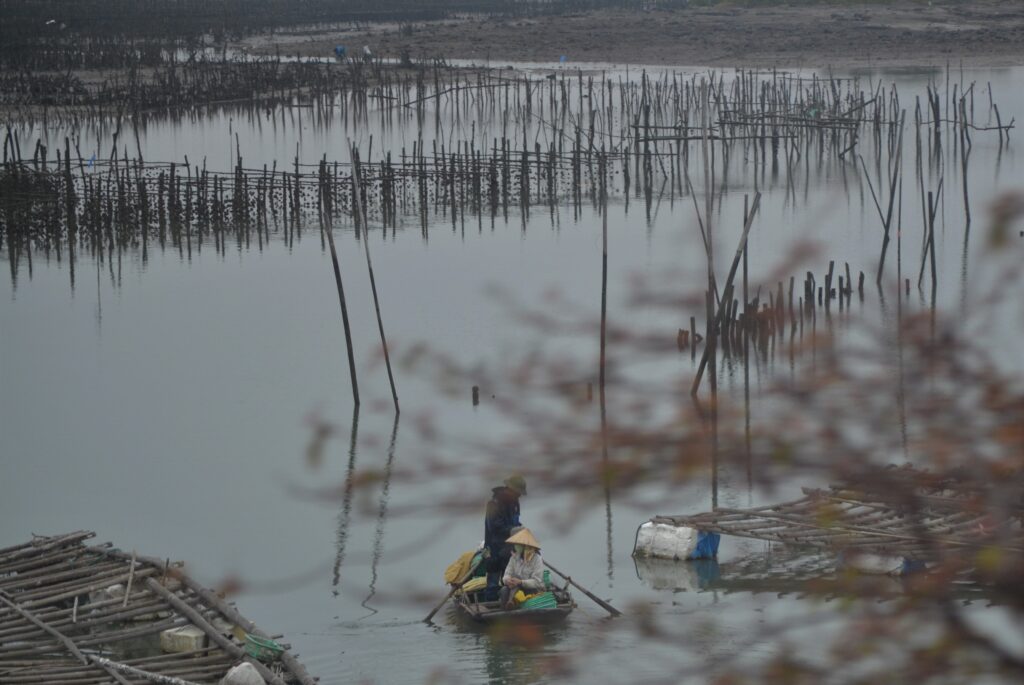Text and Photos by Henrylito D. Tacio
Zinc is called an essential trace element because very small amounts of this mineral are necessary for human health. Unfortunately, the human body cannot store excess zinc so much so that it has to be part of the daily diet.
Zinc – along with vitamin C and vitamin A – is one of the nutrients recommended by doctors to be taken against the coronavirus disease 2019 (COVID-19). It helps to slow down the immune response and control inflammation.
Zinc can be found in red meat, poultry, crabs, baked beans, chickpeas, and yogurt. One of the best sources of zinc is oyster; a 100-gram serving contains 605% of the reference daily intake (RDI).
Although low in calories, oysters are loaded with nutrients, including protein, healthy fats, and minerals. Aside from zinc, a 100-gram serving provides over 100% of the RDI for vitamin B12 and copper and over 75% of a person’s daily needs for selenium and vitamin D.
People either love them or hate them. But oysters are an excellent source of high-quality protein, with a 100-gram serving packing in 7 grams of this filling nutrient. “They’re also a complete protein source, meaning they contain all nine essential amino acids your body needs,” healthline.com says. “Adding protein sources to meals and snacks can help promote feelings of fullness and encourage weight loss.”
No one knows when Filipinos started eating oysters, but history records showed human beings consumed oysters as far back as 164,000 years ago. In the United States, oysters were considered a cheap food mainly enjoyed by the working class in the early 19th century.
Oysters are shucked and eaten raw, cooked, or smoked. “Up there with caviar, foie gras and champagne as one of the world’s ultimate luxury foods, oysters don’t look much from the outside but the flesh of these bivalved molluscs is wonderfully succulent and delicately flavored, varying in color from pale grey to beige, surrounded by a clear juice,” BBC’s Good Food says.
Most people think oysters produce pearls. What they don’t know is that very few oysters produce jewelry-quality pearls on their own; that usually requires humans prying open a cultivated oyster’s shell to insert a grain of sand or other seeding material.
“Oysters make pearls when such foreign substances lodge in their shells,” explain Holly Binns and Joseph Gordon, project directors of a program of Pew Charitable Trusts. “The oyster deposits layers of nacre, the material that makes up pearls, around the foreign body to wall it off and reduce irritation.”
Oysters play a big role in the marine and coastal environment. According to the Food Republic, each oyster filters about 30 to 50 gallons of water a day. “Oysters feed by pumping water through their gills and in the process capture algae and other particles, sort of like a strainer,” Binns and Gordon state. “So, by cleaning the water, oysters help maintain the balance of their ecosystems.”

v 
Pearl farm
Oysters live in brackish and saltwater bays, estuaries, tidal creeks, shallow ocean areas, and intertidal zones – regions submerged at high tide and exposed at low tides. “Coral reefs help diffuse energy from storms and tides, which helps safeguard coastlines by preventing erosion and protecting estuary waters that serve as breeding grounds for marine life,” Binns and Gordon write.
Wild oysters can live 25 to 30 years, but typically most don’t survive past six years. “To reproduce, oysters spawn tiny larvae that move through the water and settle on a surface, such as other oyster shells, where they will grow for the rest of their lives. Once attached, these larvae are called spat. As generations of spat grow into adults, they form oyster beds or reefs,” wrote Binns and Gordon.
Being an archipelago, there are many sites for oyster farming in the Philippines. But its production ranked only eighth in the world, with 20,508 metric tons in 2017. This was according to Dr. Wilfredo Yap in his presentation, “Status and Prospects of Hatchery and Culture of Shellfishes,” during the first National Shellfish Summit held in Dagupan City in 2009.
A paper prepared by the UN Food and Agriculture (FAO) states four methods of oyster cultures are practiced in the Philippines: broadcast (sabong), stake (tulos), lattice, and hanging (bitin, sampayan, horizontal, and tray) methods.
Broadcast
This method is the most simple and primitive method; it is adopted in areas with firm enough bottoms to support the collectors. Empty oyster shells, stones, logs, and tin cans are scattered over the selected area where the natural setting occurs. Oyster spats are grown to the commercial size on the collectors.
Stake
Usually used in areas with relatively shallow waters and soft muddy bottoms. The main material used is bamboo poles. The stakes are drive into the bottom in rows. The tip of the stake extends to the high-water level due to the fact that oysters can survive and grow in the intertidal zone. The bamboo poles provide a clear surface to which the oyster larvae settle after their pelagic phase. Culturists often increase the attachment surface by adding horizontal bamboo sections or by clipping empty oyster shells or other hard materials to the stakes.
Lattice
Bamboo splits are used to construct a lattice that is held together with galvanized wire or monofilament nylon twine. The splits are spaced about 15-30 centimeters apart, and usually one lattice until comprises 10-16 splits, which can be easily handled by one operator. This structure can be positioned in a great variety of ways, either horizontally or vertically. In the fence style, the lattice is stuck on the bottom or supported by bamboo poles. It can also be mounted on rocks or suspended in the water column when mounted on long bamboos or empty drums.
Hanging
Empty oyster shells or coconut shells are used as collectors. These are strung together on a synthetic rope and held 10 centimeters apart by spacers, such as bamboo tubes or knots made on the twine. Often collector shells are not spaced during the splatting season but are restrung with spacers during the grow-out phase. Usually, each collector measures from 1-2 meters depending upon the depth of the water.
However, there’s a new style of raising oysters – which are not only single but also young and meaty. Most seafood restaurants often separate, sort, and clean larger shells to enter the lucrative market of premium clustered oysters served in hotels and high-end restaurants.
To solve this laborious practice, Dr. Ma. Junemie Hazel Lebata-Ramos suggests that by giving oysters their own private space to grow in pouches or trays, they can grow unclustered, yield up to 59% more meat, and in 50% less time.
Dr. Lebata-Ramos is a scientist of the aquaculture department at the Iloilo-based Southeast Asian Fisheries Development Center (SEAFDEC). The study was funded by the Philippine Council for Agriculture, Aquatic and Natural Resources Research and Development (PCAARRD) of the Department of Science and Technology (DOST).
She and her team placed wild-collected baby oyster “spat” and individually stocked them in prototype net pouches and plastic trays suspended from floating bamboo rafts.
The study site was conducted in Batan Bay in Aklan. The team placed one oyster each in the 25 compartment pockets of each hanging pouch. The plastic trays, on the other hand, are stacked on top of each other, with each tray also containing 25 oysters.
The spats were collected from submerged tires and old oyster shells where, in the traditional method, they would otherwise have been left to grow to harvestable size.
“Growing them individually in a space without overcrowding may have caused these oysters to grow larger and meatier compared with those reared using traditional methods,” Dr. Lebata-Ramos pointed out. “More importantly, the oysters in pouches and trays grew individually and achieved almost uniform sizes, which is what the premium market requires.”
Growth was also faster for the pouch-grown oysters, which took only nine months, including time for spat collection, to reach the 85-gram premium size. In traditional methods, oysters could take as much as 12 to 18 months to reach that size, Dr. Lebata-Ramos said.

